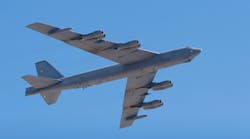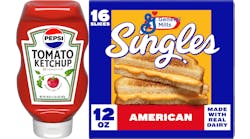Boeing’s locations in Washington state, Chicago and North Carolina get the attention (both good and bad), but the aerospace behemoth also has a strong presence in Oklahoma City, with 3,400 employees—three-quarters of them engineers. It’s central location for design modifications and upgrades for bombers, surveillance airplanes and tankers and executive transport including Air Force One.
Nancy Anderson, vice president of aircraft modernization and modification at Boeing, began her Boeing career as a programming engineer for B-1 bombers in Oklahoma City in 1997, then graduated to many others corners of the business, from logistics to lead engineering to supervising the upgrading of Boeing’s commercial airline manufacturing facilities in Everett, Washington. She returned to Oklahoma City in 2019 to take on her current role, relishing the mix of U.S. military work around Tinker Air Force Base as well as international clients (40% of her business is international, much of it around upgrades and modifications to the Airborne Warning and Control System).
Anderson spoke with IndustryWeek about Boeing Oklahoma’s challenges around Covid-19 and the importance of small suppliers in aircraft modernization efforts.
Every large manufacturer has hurdles around Covid-19. What have been yours, and how have you addressed them?
We’ve had some issues where certain suppliers are saying, “Hey, we need to furlough some workers and shut down for a little bit.” We work through it.Nancy Anderson
In my portfolio, I have executive transport work—Air Force One and the vice president’s and secretary of state’s airplanes, and also for international heads of state. We’re working on [transport] right now for India. Those types of businesses, you’re putting an airplane together, or you’re making modifications on an airplane, so you’re in a confined space .You have to apply the social distance guidelines, so obviously, that work is taking longer to do.
Everything has its impact, but luckily, we’ve been able to work through it. Our customers have been very supportive. They understand the situation, and they work with us.
Is most of your workforce offsite during the pandemic, and do you think you’ll implement more remote working post-pandemic?
We’re about 80% virtual and 20% on site because of our labs, where you actually have to be in the facility to run your programs. With our large footprint, we can spread out with that few coming in. We have pretty strict rules on how many can be in the labs at a time, but we’re not in totally confined spaces.
We’ve been talking about more remote work because we’ve been growing to the point where we’ve been looking at needing more space. Before COVID, we were going to do a work placement study, a strategy to understand, “Well, can we do different shifts, could some people work from home?” Now we are doing real-time that study, collecting data as we go. So that when we do come back to work, we’ve got a phased approach of how we’ll start to bring people back in.
But at the end of it, we’re saying, “Okay, is there something we’ve learned from this? What works well? Where’s the productivity? What suits itself to maybe some of that work remaining virtual?” We are looking at that to see if that might help with some of our space constraints that we were looking at not immediately, but into next year. And everything we’ve learned from this experience will help us to better align what work can remain virtual.”
Obviously with some of our work, having to come in for testing and labs and obviously, classified-type work, you’re going to have to be on site. But a lot of the rest, we’re looking at and saying, “We are being just as productive [with remote work].”
Despite the pandemic, Boeing is hosting 100 college interns as planned. How will that work?
We’ll bring them in but spread the visits out around our [social distancing] guidelines, give them the equipment they need, a laptop and a badge and an orientation, introduce them to their managers, get them going with what they’ll be doing. And then they’ll work from home. We have electronic whiteboards and virtual meetings and webcasts, so we can keep track and talk to folks.
We did cancel our high school interns—we had restarted a high school intern program and then thought [with the virus] that would be too difficult.
What is Boeing doing around Covid-19 relief?
We’ve been using our Dreamlifter that is capable of supplying huge parts to bring PPE across the country, wherever it’s needed. And we’ve been using our 3D printers to print face shields. Our employees came up with the designs and options. We have been providing masks to other groups and organizations that are in short supply where we can.
Boeing Oklahoma recently gave back $1 million in state funds, to instead go to small businesses for the Oklahoma Manufacturing Reboot program. We had plans for that money for our expansion, but felt it would be better served to make sure suppliers in the community were not struggling and would be able to stay in business.
For every dollar that Boeing gets, 70 cents goes to our supply chain. So it’s really important that we have healthy suppliers. In Oklahoma, we support over 22,000 jobs with 113 suppliers annually. A large number of those suppliers have under 100 employees. And that’s really who this Reboot program serves.
If you think of the type of platforms we’re supporting, some of the older platforms, like your B-52, B-1-- they’ve been flying for 50 or 60 years. Those suppliers are the small, specialty companies who produce components that are difficult to find.
You’ve been at Boeing more than 20 years. Was there a leadership development program that prepared you to move from an engineering to an executive role?
I’ve had the pleasure in my Boeing career of having the opportunity to work in a number of our segments. Right now I’m on the defense side. Previously, I was on the commercial side. So I worked up in our Everett (Washington) factory. I had the opportunity to work on our space programs in Florida. So I’ve worked on fighters, bombers, spacecraft, commercial airplanes. I never dreamed I would have those types of cool opportunities, expanding my network and ability to solve problems, bring teams together.
I was lucky to have good mentors—and the game-changer was a program that I was selected for that enabled me to go from defense to commercial. You would think in a company like Boeing, a lot of people have worked both sides, but not really. And that just expanded my network and my abilities. They put me in that development program intentionally, and that was the catalyst that enabled me to move up the chain. I didn’t recognize it at the time. I thought, “Oh gosh, I know nothing about this area. Why am I here?” And I quickly learned, “Okay, I can do this.”
Got a manufacturing candidate for Profiles in Leadership? Contact leadership reporter Laura Putre.






